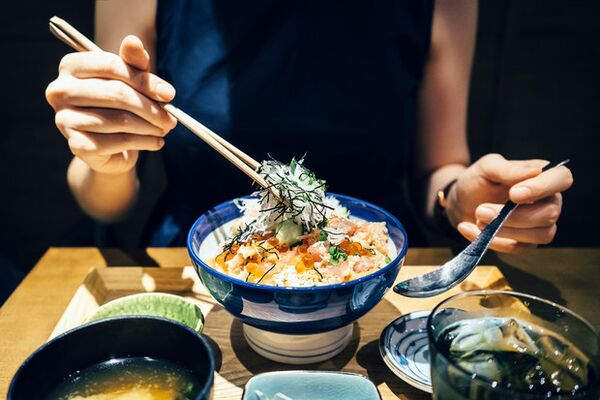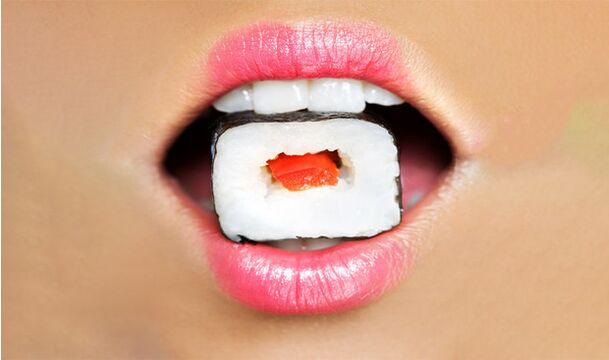The Japanese are well known for their physical and long life, in many ways due to the diet they follow.The editors turn to Medical Sciences, Sports Medicine Doctors and Sports Dietetics, experts to the Federal Fitness Club network to find out about all dietary features.
The essence of the Japanese diet is the launch of the metabolism.You need to obey the menu clearly, without changing the order of the day or a set of products, clearly observing the cooking rules.This diet can be called Bessolev exactly due to the fact that you drink a lot and do not eat salty food, literally washed.

This diet is based on increased protein in the diet and limits fat and carbohydrates.The basis of your menu should be fish, chicken, beef, eggs, cheese and kefir with a low percentage of fat content.Vegetables are not prohibited in simple fruits.The list of what you need to reject is wider, like any diet.
Forget salt, sugar, seasoning (they make you eat more than you need to satisfy hunger), leave meat, bread, bananas and grapes in the store.
Japanese women, because this diet is called loving, threatening with dehydration, so it is very important for 14 days to drink at least 2 liters of water daily.
You should not be hungry at the expense of protein - it is well saturated, the allowed cheese will provide the minimum fat it needs to the body, and the vegetables - fiber and carbohydrates.
The Japanese diet menu is designed for a week, after which it is designed to repeat the passing days.During the diet, snacks and any deviation from the proposed menu are strictly prohibited, otherwise the results will be far from expected.
What they promised
Japanese diet period: from 7 to 14 days.No more!
How much can you throw away: up to 8 kilograms.
Poor: Available.
Lack of Japanese diet:A very tight diet, difficult to withstand and not break.
Some experts think that the Japanese diet has increased metabolism by two years, that is, tortured for two weeks, and the results will be held for a long time.
Nutritional features of Japanese population
Japan is a long country.The average life expectancy of women is 87 years, and this is more than any other country in the world.What is the reason for the unusual life expectancy?Researchers believe that the reason lies in lifestyle in general and in the nutritional culture in particular.

First, the food in Japan is cooked, boiled and steamed, but is not fried using a large amount of oil.This radically distinguishes Japanese cuisine from the West and even Chinese, where all dishes are very fat.
Second, in the Japanese diet there are many fresh seasonal products in combination with multi -color products.The principle of diversity, therefore, forms the basis of healthy eating of Japan.
Third, the size of the Japanese part is small, and in this case they are radically different from the people of other countries.Desserts in Japan are much smaller than traditional Western, and most, where some countries are used for (for example, 400 grams of pig kebab) are unacceptable to the Japanese.
Japanese diet of underwater stone
"The problem is that the Japanese diet has nothing to do with the type of Japanese nutrition," commented by the experts-according to the legend, the diet was developed in a particular Japanese clinic.However, there is no description of this clinic or address anywhere in English or Russian website.At the same time, by typing a phrase with the name of this clinic in any of the search engines, you can find more than a thousand boring texts with the description of the Japanese diet.However, depending on my medical experience, I can confidently say that the Japanese diet does not exist.I will justify my position.
- The Japanese diet is a low diet, designed for 7-14 days.Currently, you can actually remove a few pounds, as any strict restrictions in eating lead to weight loss.However, adipose tissue is not just a supplement, but the most important endocrine organs.The sharp spread of a few pounds is full of imbalance of the regulation of hormone metabolism.
- This is a low diet.However, carbohydrates along with protein and fat are an important component of nutrition.In addition, carbohydrates are the source of energy we use daily for mental and physical work.Alternative energy sources in the form of fat in the Japanese diet are not contained.
- This is a diet that basically does not provide breakfast, as it is difficult to call a black coffee or a vegetable breakfast.However, breakfast is the main dish, thanks we get all the nutritional components (protein, fat and carbohydrates) needed to work in the first half of the day.
- This is the end of the diet.Any diet based on restrictions does not take into account the rules of healthy food and diet.Furthermore, this leads to the fact that the classic mechanism of "weight loss on the diet is launched - it is better after the diet".
Therefore, it is not different from other diets that do not have eligible justifications: they are united with slogans that guarantee a quick loss of 10 kg a week and at the same time do not take into account the loss of weight loss for human health.
In any case, preparing for the diet should be careful, it is best to consult your doctor before going to Japanese food.You can try such a diet if you have no contraindication: pregnant women, breastfeeding mothers, with liver disease, kidney, gastritis and ulcers should not turn to a difficult diet.

Japanese diet during the day
First day
Breakfast: Black coffee (always without sugar and milk).
Dinner: 2 hard eggs, boiled cabbage salads (vegetable salads -roasted with vegetable oil) and a glass of tomato juice.
Dinner: 250 g of boiled or fried fish.
Second day
- Breakfast: Black coffee and a piece of rye bread.
- Dinner: 250 g of boiled or fried fish, boiled cabbage salad.
- Dinner:100 g of boiled beef and a glass of kefir.
The third day
- Breakfast: Black coffee and a piece of rye bread.
- Dinner: Large zucchini is fried in vegetable oil.
- Dinner: 2 hard eggs, 200 g of non -adjusted boiled beef, raw cabbage salad.
The fourth day
- Breakfast: Black coffee.
- Dinner: 1 egg, 3 carrots and 15 g of cheese.
- Dinner: 200 g of fruit.
Fifth day
- Breakfast: Grated carrots with lemon juice.
- Dinner: 200 g of boiled or fried fish and a glass of tomato juice.
- Dinner: 200 g of fruits.
The sixth day
- Breakfast: Black coffee.
- Dinner: 400 g of non -coordinated boiled chicken, fresh cabbage salad and carrot.
- Dinner: 2 screws and fresh carrots.
The seventh day
- Breakfast: tea.
- Dinner: 200 g of non -adjusted boiled beef, 200 g of fruit.
- Where's the previous dinner.
There are many contraindications in this diet, from stomach to adolescence or pregnancy, so before its use is a doctor's consultation.
Eighth day
- Breakfast:Black coffee.
- Dinner:500 g of chicken failed boiled and carrot salad and cabbage.
- Dinner: Fresh carrots and 2 boiled eggs.
Ninth day
- Breakfast: Grated carrots with lemon juice.
- Dinner: 200 g of boiled or fried fish and a glass of tomato juice.
- Dinner: 200 g of fruits (you can make salads).
The tenth day
- Breakfast: Black coffee.
- Dinner: 3 boiled carrots, 1 boiled eggs and 50 g of cheese.
- Dinner: 200 g of fruit.
The eleventh day
- Breakfast: Black coffee and a piece of rye bread.
- Dinner: Large zucchini is fried in vegetable oil.
- Dinner:200 g of unpopulated beef, 2 hard eggs and fresh cabbage salads.
The twelfth day
- Breakfast: Black coffee and a piece of rye bread.
- Dinner: 200 g of boiled fish or fried with fresh cabbage salad.
- Dinner: 100 g of non -adjusted beef and a glass of kefir.
Thirteenth Day
- Breakfast: Black coffee.
- Dinner: 2 boiled eggs, boiled cabbage and a glass of tomato juice.
- Dinner: 200 g of boiled or fried fish.
Fourteenth Day
- Breakfast: Black coffee.
- Dinner: 200 g of boiled or fried fish, fresh cabbage salad.
- Dinner: 200 g of boiled meat, a glass of kefir.






























